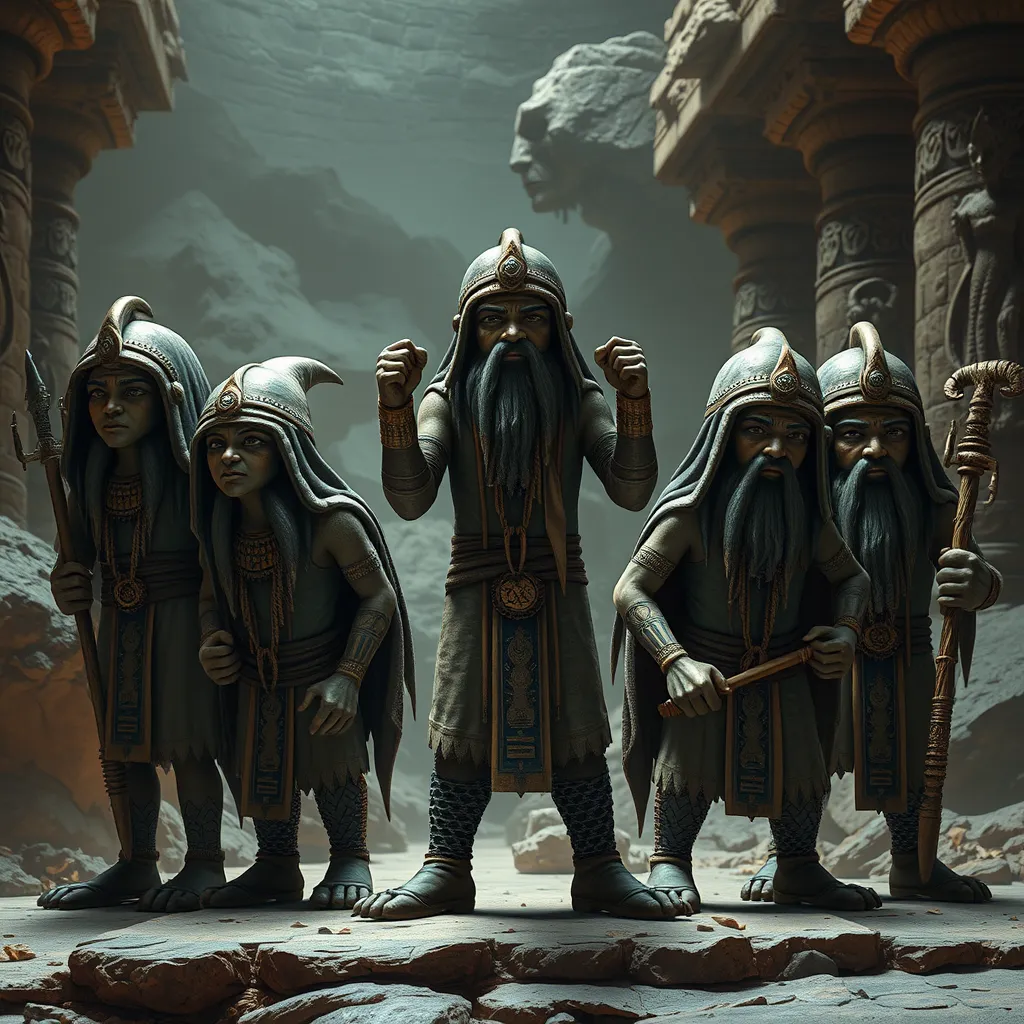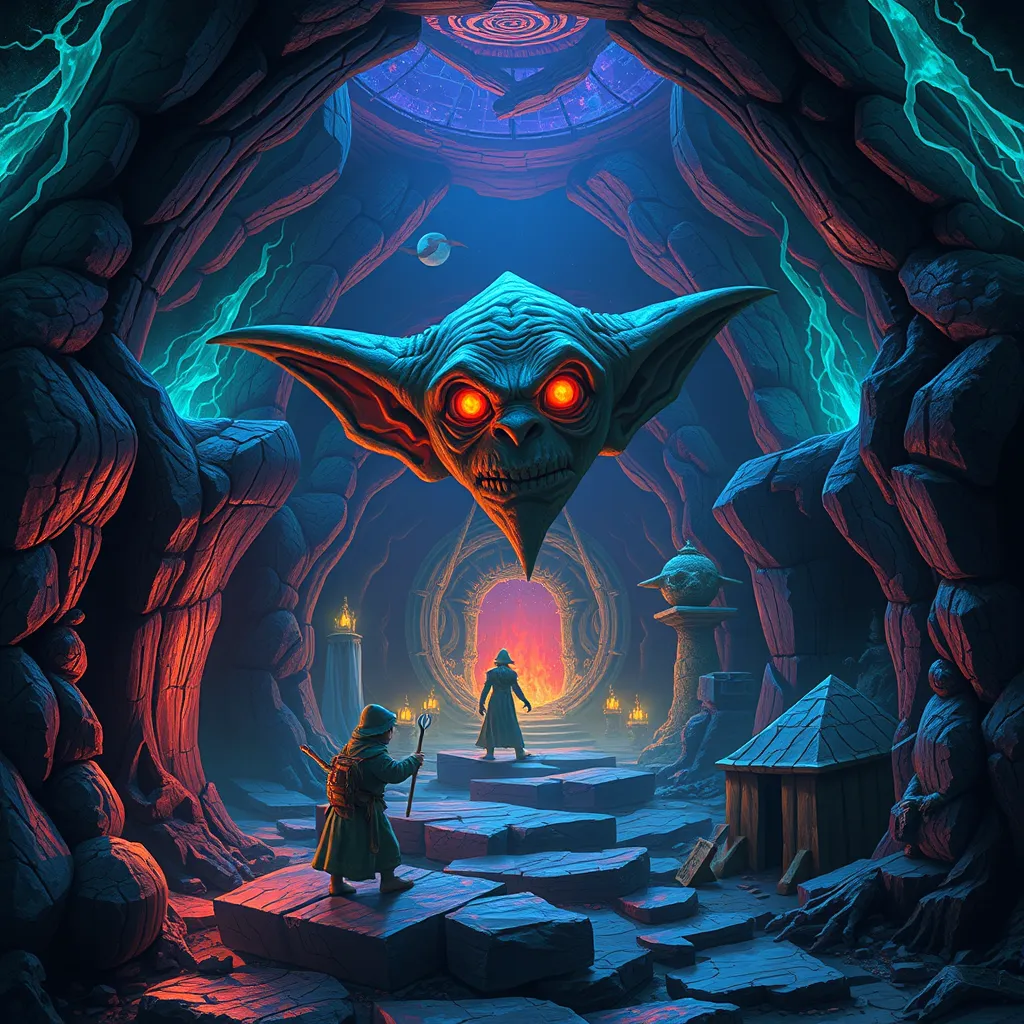The Dwarves of the Underworld: Examining the Role of Dwarves in Egyptian Mythology
I. Introduction
Egyptian mythology is a rich tapestry of gods, goddesses, and mythical creatures that have fascinated scholars and enthusiasts alike for centuries. It serves not only as a religious framework for the ancient Egyptians but also as a cultural legacy that has influenced countless civilizations. Among the myriad figures in this mythology, dwarves hold a unique and significant place, often misunderstood or overlooked.
This article aims to explore the representation and role of dwarves in ancient Egyptian culture and mythology. We will examine their historical context, symbolism, mythological associations, and their legacy in both ancient and modern contexts. Through this exploration, we hope to shed light on the importance of dwarves within the broader framework of Egyptian mythology.
II. Historical Context of Dwarves in Ancient Egypt
A. Origins of dwarfism in ancient societies
Dwarfism, as a condition, has been documented throughout history and across various cultures. In ancient Egypt, individuals with dwarfism were often viewed differently than in many other societies. Rather than being marginalized, they were frequently celebrated and held significant roles within society.
B. Depictions of dwarves in Egyptian art and artifacts
In Egyptian art, dwarves were commonly depicted in various forms, from statues to wall carvings. They were often shown with distinct physical characteristics, such as shorter stature and unique facial features. These representations were not only realistic but also imbued with symbolic meaning, often portraying dwarves in roles of importance and reverence.
C. Notable historical figures and their roles as dwarves
- Seneb: One of the most famous dwarves in ancient Egypt, Seneb served as a high-ranking official during the Old Kingdom period. His tomb, adorned with inscriptions and carvings, illustrates the respect he garnered in life.
- Khnumhotep: Another notable figure, Khnumhotep was a dwarf who held a prominent position in the royal court, further exemplifying the varied roles dwarves could take on.
III. The Symbolism of Dwarves in Egyptian Mythology
A. Dwarves as protectors and guardians
Dwarves in Egyptian mythology were often seen as protectors and guardians, particularly in tombs and temples. They were thought to ward off evil spirits and ensure the safety of the deceased in the afterlife, embodying a sense of security and vigilance.
B. The duality of dwarves as both humorous and serious figures
The representation of dwarves in Egyptian mythology reveals a duality; they were both humorous and serious figures. They often appeared in comedic contexts, providing entertainment and levity, yet also held serious positions as guardians and deities.
C. Connection to fertility, earth, and the afterlife
Dwarves were closely associated with fertility and the earth, symbolizing the nurturing aspects of nature. In the afterlife, they were seen as essential figures who guided souls through the trials of the Duat, the Egyptian underworld.
IV. Dwarves and the Underworld: Mythological Associations
A. The Underworld in Egyptian belief systems
The Underworld, or Duat, was a complex realm in Egyptian mythology, filled with challenges and trials that souls had to navigate after death. It was a place of transformation and rebirth, where dwarves played a vital role.
B. Roles of dwarves in the journey through the Duat (Underworld)
Dwarves were believed to assist souls on their journey through the Duat, offering guidance and protection against malevolent forces. Their presence in the underworld symbolized strength and resilience, helping to ensure safe passage to the afterlife.
C. Specific deities and figures associated with dwarves in the afterlife
- Bes: The most well-known dwarf deity, Bes was worshipped as a protector of households, childbirth, and the afterlife. He was often depicted with a cheerful disposition, emphasizing his role as a guardian.
- Ta-Bitjet: Another dwarf deity associated with protection, Ta-Bitjet was believed to guard the deceased in their tombs, ensuring they were safe from harm.
V. Dwarves in Egyptian Literature and Texts
A. Examination of references in religious and mythological texts
Dwarves are referenced in various ancient Egyptian texts, including religious inscriptions and mythological stories. These references often highlight their roles as protectors and guardians, underscoring their significance in the spiritual realm.
B. Key stories featuring dwarves and their significance
Several stories in Egyptian mythology feature dwarves prominently. For example, tales of Bes illustrate his protective nature and his influence in both life and death, showcasing the duality of his character.
C. Comparative analysis with other cultures’ depictions of dwarves
Comparatively, dwarves in other cultures, such as Norse or Celtic mythology, often embody different traits, commonly associated with mischief or trickery. In contrast, Egyptian dwarves are predominantly seen in protective and nurturing roles, highlighting the unique cultural perceptions of these figures.
VI. Rituals and Practices Involving Dwarves
A. Ceremonial roles of dwarves in ancient Egyptian religion
Dwarves played ceremonial roles in various religious practices, often participating in rituals intended to invoke protection or blessings. Their presence was believed to enhance the efficacy of these ceremonies.
B. Use of dwarves in funerary practices and tombs
In funerary practices, dwarves were frequently depicted in tomb artwork and included as part of grave goods. Their imagery served to provide companionship and protection to the deceased in the afterlife.
C. Influence on modern interpretations and adaptations
Modern interpretations of dwarves in popular culture often draw from these ancient depictions, portraying them as guardians or wise figures. This connection underscores the lasting impact of ancient Egyptian beliefs on contemporary representations of dwarves.
VII. The Legacy of Dwarves in Egyptian Mythology
A. Impact on subsequent cultures and mythologies
The legacy of dwarves in Egyptian mythology has influenced subsequent cultures, with many aspects of their representation appearing in later mythologies and folklore. Their protective qualities and roles as guardians have persisted through time.
B. Modern representations of dwarves in popular culture
Today, dwarves are commonly depicted in literature, film, and other media, often reflecting their ancient roles as protectors or wise figures. This enduring legacy showcases the fascination with these characters in contemporary storytelling.
C. Ongoing scholarly interest and research
Scholarly interest in the role of dwarves in Egyptian mythology continues to grow, with researchers exploring their cultural significance and representation in various historical contexts. This ongoing research contributes to a deeper understanding of ancient Egyptian society and its values.
VIII. Conclusion
In conclusion, dwarves in Egyptian mythology occupy a multifaceted role that encompasses protection, humor, and deep cultural significance. Their depictions in art, literature, and rituals reveal a society that valued diversity and the unique contributions of all its members. Understanding the role of dwarves in this rich mythological landscape not only enhances our knowledge of Egyptian culture but also illustrates the enduring legacy of these figures in modern interpretations.
As we reflect on the importance of dwarves in Egyptian mythology, we recognize the need for further exploration and research in this area. The interplay of history, culture, and mythology surrounding dwarves provides a captivating lens through which to view ancient Egyptian civilization and its beliefs.



